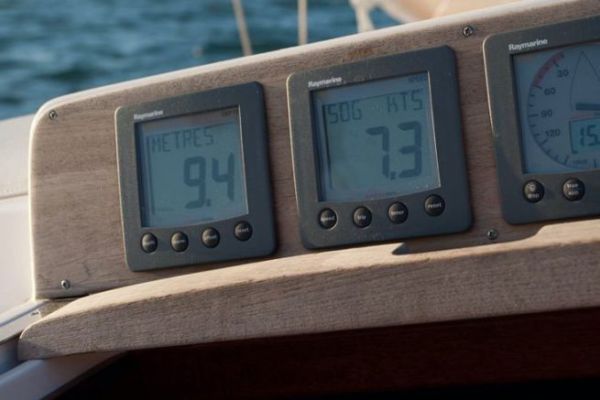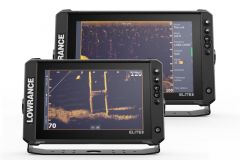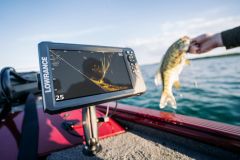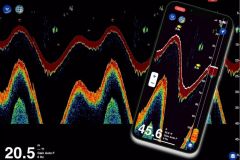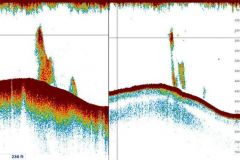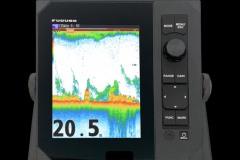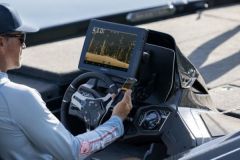The sounder has several useful functions that are hard to do without:
- Choosing the right place to anchor
- Guide yourself along a river bed with shifting sand and mud banks.
- Navigate by dead reckoning using the sounding lines on the map
This instrument is extremely accurate: modern echo sounders have a margin of error of 3%, or 3 centimetres per metre of water depth. However, to use it properly, you need to know the reference level from which it calculates the water level. You can then calibrate it, i.e. choose this reference level.
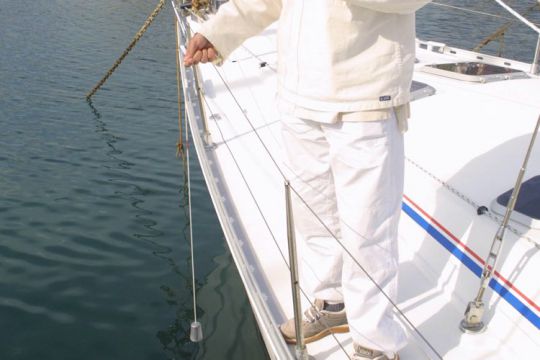
Here's how to calibrate a sounder:
- Check the displayed measurement with a hand-held probe
Measure the height between the bottom and the surface of the water beneath your boat, as close as possible to the probe. To do this, the bottom must be fairly hard. Avoid bottoms of liquid or soft mud in which your lead will sink. - Compare the actual height with the displayed height to determine the correction to be applied.
- Enter the correction into the device so that it displays the actual height from the surface.
Your reference level is now the surface of the water. Some sailors stick to this setting. However, it is advisable to add a pilot foot to this measurement.
The pilot foot is the height of water removed from the echo sounder measurement to give a safety margin. Personally, I recommend deducting 50 cm from the actual water level. So when the sounder indicates 2.50 metersc (4), there is actually 3.00m of depth below the surface (3).
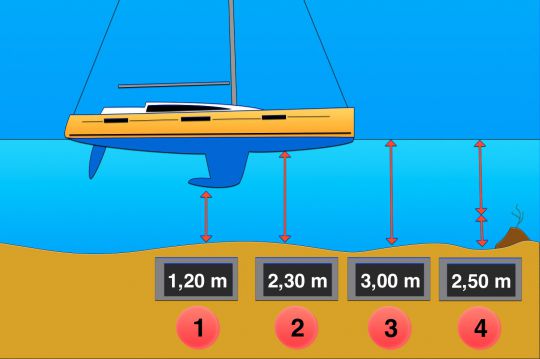
- 1 - Depth under keel
- 2 - Measured depth
- 3 - Actual depth
- 4 - Depth minus pilot foot
Why the pilot's foot?
The pilot's foot is useful, as it will give you more time to slow down and avoid abrupt heeling. Even if you calculate water heights very precisely, atmospheric pressure and offshore storms can alter the tidal range by a few tens of centimetres. Sometimes uncharted obstacles litter the seabed, and these 50 cm may save your boat's keel from these unpleasant encounters.
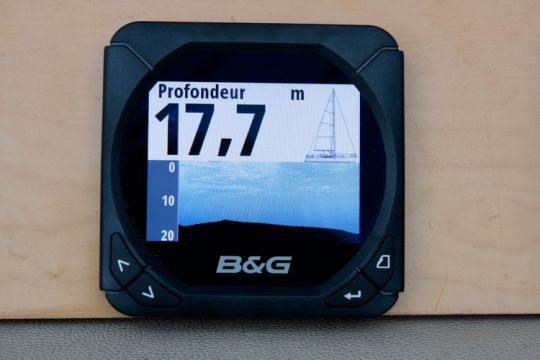
Place the reference level under the keel
This solution lets you know immediately how much water is available under the keel.
If you want to calibrate the sounder in this way, simply enter a pilot foot equal to your draft. For a keelboat with a draft of 1.80 m, the sounder will display 1.20 m (1) when the actual depth is 3.00 m (3).
Each yachtsman will choose the solution with which he feels most secure: a 50 cm pilot foot or depth under the keel. Which solution is chosen depends very much on the psychology of the skipper. But don't forget to inform the crew in charge of navigation...

 /
/ 